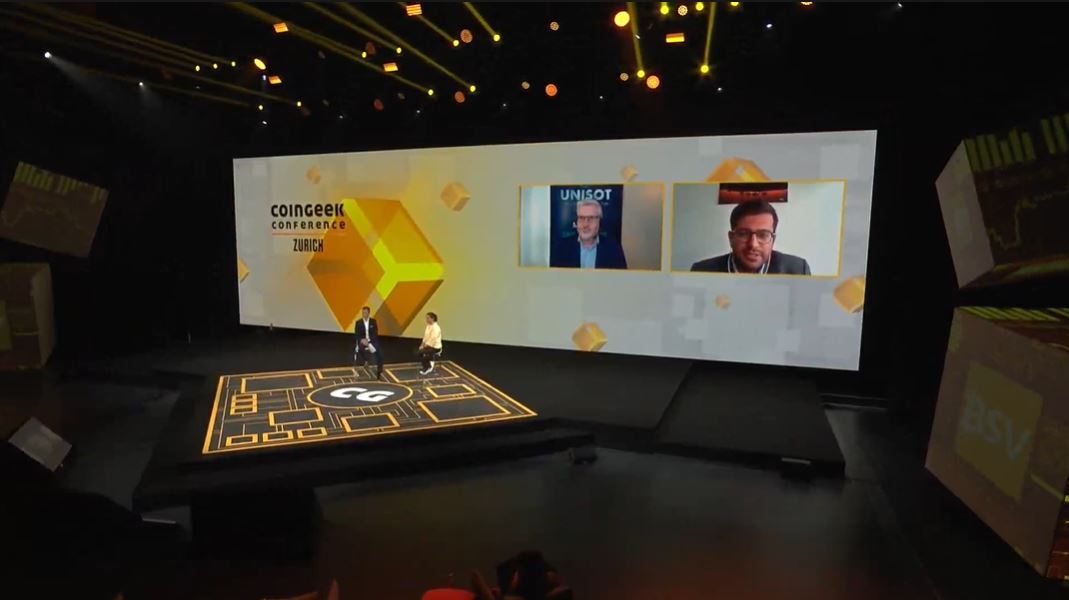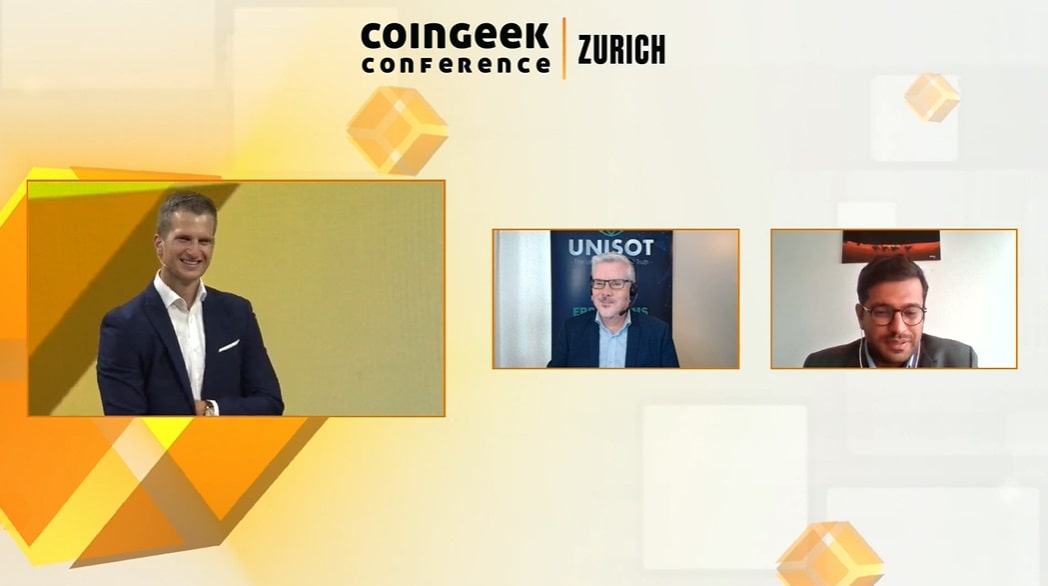CoinGeek Zurich: Here’s how blockchain can improve supply chain efficiency, sustainability

The potential for turning data into a force for change in global economies through the BSV’s enterprise blockchain will depend critically on the adoption of these solutions in supply chain distribution networks. At the CoinGeek Conference session Supply Chain, Product Provenance & Blockchain on Day 1, an expert panel discussed how blockchain technology can improve efficiency and contribute to sustainability initiatives in the supply chain industry, as requested by consumers and regulators alike.
Bitcoin Association’s Patrick Prinz moderated the session whose panelists included Blockchain Lead Husen Kapasi of PwC Europe, Blockchain Practice Leader Tatjana Meier of IBM Services Switzerland, and UNISOT co-founder and CEO Stephan Nilsson. Speakers discussed the increasing importance of integrating incentivized data-sharing solutions between companies and consumers across supply chains.
Early on, Prinz mentioned a significant legislative proposal whose impact on the German economy is expected to have wider implications for Europe after taking effect in 2023. You may be forgiven for not having heard of it: Lieferkettengesetz (or, “Supply chain act” in German) will require German companies and their partners to perform due diligence in preventing human rights violations, including adverse environmental effects. These changes are being driven both by consumers and regulators who are willing to pay a premium for knowledge of “provenance” (or sourcing), according to Meier. She added that as consumers become more conscious of what they feed their children and where it comes from, nutrition is a critical area of focus.
PwC aims to be an “ecosystem driver” through its consulting, according to Husen Kapari. He thinks early adoption of blockchain solutions in the supply chain industry may depend on emphasizing blockchain technology as a complementary “enhancement” rather than a replacement solution to a company’s logistics problems. This is especially true of supply chains that involve interdependent actors and cross-border regulations, presenting challenges for implementing system-wide changes.
Additionally, it’s crucial for supply chain management providers to connect the dots between various inputs that companies already collect across their value chain and to aggregate this data for them. Big companies tend to run independent blockchain programs, if at all, but to work these must integrate with the “Internet of Things” (IoT) and analytics, Kapari explained. In this way, IoT is linked to the future development of digitalizing supply chains, enabling container-, pallet-, or item-level transparency.
In fact, UNISOT can already collect and store especially granular data in the Norwegian seafood industry, Nilsson remarked. For example, they can record the temperature in a container or warehouse at a particular time and place. In ensuring food safety and quality, these data sets are of huge value both to consumers and to regulators. Kapari sees retail and farming as the biggest sectors adopting blockchain technology. Meier agrees with this, but expressed puzzlement at the slow response and lack of interest in the public sector, particularly healthcare, where she believes there is more opportunity. (Perhaps she missed the preceding session Health Care & Blockchain: Empowering Patient Data.)
Kapari and Meier recognize certain use cases would benefit from a “private, permissioned” blockchain, or a “hybrid” solution (IBM describes “shared” ledgers on its website, for example). Meier conceded that open, permissionless blockchains have the advantage of a “network effect” and the ability to build on existing infrastructure for various applications. She said that while IBM offers a full suite of internal products, the client-centric company is also open to using external solutions for the right reasons. Nilsson clarified that a blockchain is by definition a public, distributed ledger, and what Meier and Kapari refer to as a private ledger is more of a “replicated database.”


When asked why UNISOT chose to build on BSV, CEO Stephan Nilsson admitted that their team looked at Ethereum, Hyperledger, VeChain, and EOS. For UNISOT, a blockchain needed to be scalable (after all, supply chains encompass the global economy), stable (already-slow adoption will be stunted further if the protocol is constantly updated), secure, and cost-effective. Having previously confessed that IBM is their biggest competitor, the UNISOT CEO did not pull any punches regarding the inadequacies of Hyperledger, a project started in late 2015 by the Linux Foundation and in which IBM is a “key player,” according to its website.
UNISOT has released a total of nine modules on their platform and is looking for industry experts and integration partners for growth and expansion. In building such relationships, Kapari notes a lack of overlap between supply chain experience and blockchain knowledge, generally, as one impediment. All panelists agreed that another roadblock to adoption is the misconception that storing customers’ data on a public ledger means making customer data public. The key is that it is actually encrypted in a business layer on the network.
Echoing this, Meier states the biggest worry for her clients and partners apart from environmental sustainability concerns is customer privacy. This misunderstanding of blockchain technology leads large companies collecting lots of data to have a limited, “protect my garden” mindset and mentality around sharing this data with their competition for unfounded fear of “security breaches.”
Likewise, Nilsson observes of supply chain actors, “even if they’re working together they’re also competitors.” But, he says, a public ledger is able to allow for the smallest actors in a supply chain to get involved in the sending and receiving of data. This is in part because microtransactions and small fees reduce economic barriers to entry. As blockchain technology continues to be misunderstood, those stewarding supply chain companies into the future of data must devote their attention primarily to education in the coming years. When reshaping the foundations of global distribution networks, slow and steady wins the race.
Source: Read Full Article

